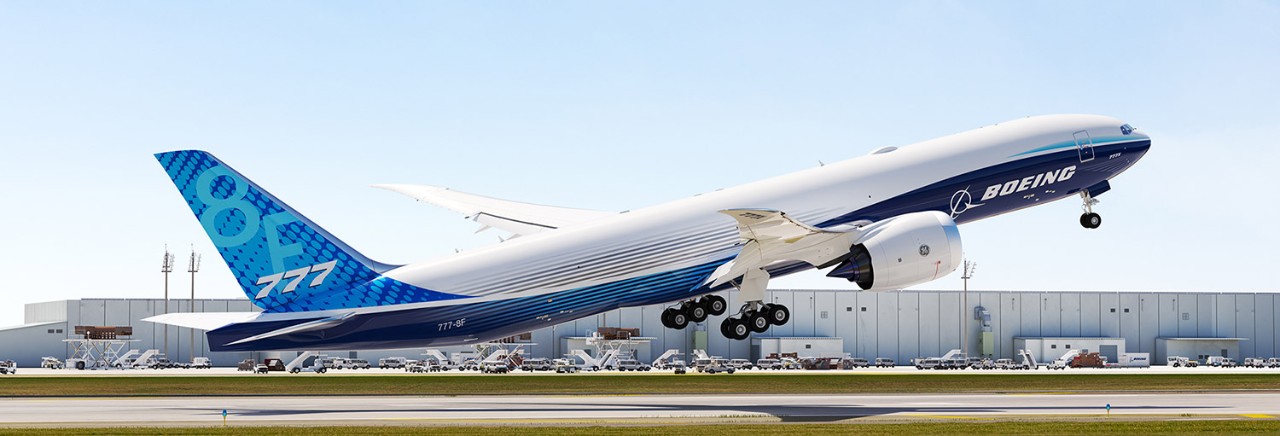The spacious, comfortable look and feel of the cabin is further enhanced by soft LED lighting, thoughtfully balanced for leisure, work or rest. The lighting can gently simulate a full flying day for longer flights, gradually changing through a spectrum of lighting from day into night. Because LED lights have no filament, they last 10 to 20 times longer than the incandescent lights that are used on airplanes today. The LED lighting also generates less heat than conventional cabin lighting.
Overview
Technologically Advanced
The new 747-8 Intercontinental features the newest engine and wing combination in the industry, new advanced materials, and an updated flight deck for better performance with a small environmental footprint.

- Second Generation Flexible Wing Design
New fully integrated raked wingtips
- More Passengers - More Payload
2 pallets forward and 2 LD-1/LD-3s aft
66 additional seats - NEW - New GEnx-2B Engines
Cleaner, quieter, more fuel efficient
- NEW - Wing
68.4 m (224 ft 5 in) span
Fly-by-wire spoilers and outboard ailerons
New technology airfoils - ENHANCED - Flight Deck
New capabilities for more efficient flight
Same type rating as 747-400 - NEW - Landing Gear
New materials
New wheels, brakes & tires


- NEW - Advanced metal alloys
More damage resistant
More corrosion resistant - NEW - Dreamliner-inspired interior
Sculpted ceilings
Dynamic LED Lighting
Larger Stow Bins
Flowing grand staircase - NEW - New Krueger flaps
- 100% - Digitally integrated airplane
- Improved - Environmental Control System
- NEW - 10 bunk overhead crew rest

Flight Deck
State-of-the-Art Flight Deck
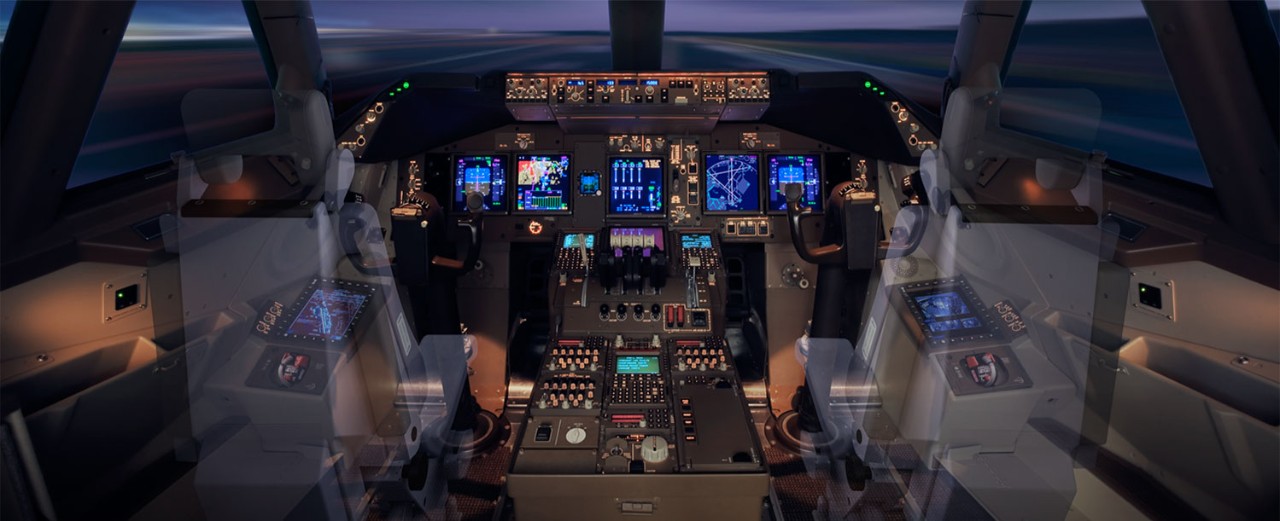
747-8 Pilot Commonality Adds Value
Flight deck and training commonality enable mixed fleet operations
Flight deck commonality among Boeing twin-aisle airplanes reduces the training time that pilots need to transition between different models and facilitates mixed-fleet flying, which lets operators use a single pilot pool for all three jets. Mixed-fleet flying also increases crew productivity by making it possible for airlines to operate with fewer pilots.
The 747-8 has the same pilot-type rating as other 747s and uses the same simulator, which minimizes pilot training time and operator costs.
- 4 AIRPLANES
- 2 TYPES
- 21 DAYS FULL-TRANSITION
- 17 DAYS STAR TRANSITION

Wing
The 747-8 wing design is the product of thousands of hours of study using the latest in computational fluid dynamics validated in the world’s most sophisticated wind tunnels. Based on that study, designers produced a wing with improved aerodynamics and greater fuel capacity without compromising speed. With a cruising speed of Mach 0.86, the 747-8 is as fast as any commercial airplane today.
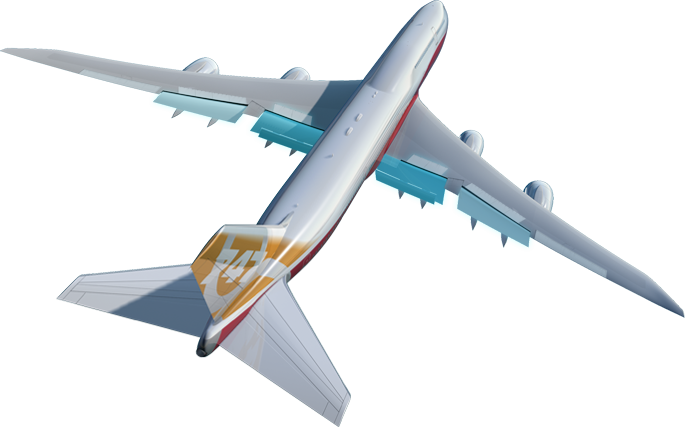
Double Slotted Flaps Inboard
Single Slotted Flaps Outboard
- Improves performance and reduces noise
Airfoil
- New supercritical design for high speed and high efficiency
Raked wingtip
- Reduces aerodynamic drag
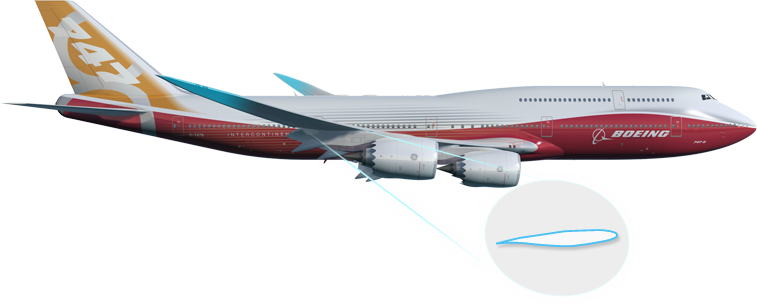

New Gapped Kreuger Flaps
- High lift gapped configuration
Engine
New State-of-the-Art GEnx Engine
- Propulsion GE Engine
- Propulsion Nacelle
The 747-8 Intercontinental and 747-8 Freighter incorporate the GEnx engine—one of the cleanest, quietest, and most fuel-efficient turbofan engines in the world. It is based on the 787 Dreamliner engine, but optimized for the 747-8. The GEnx incorporates the latest materials and design to improve performance, reduce maintenance, minimize fuel consumption, and ensure compliance with environmental regulations now and years into the future.
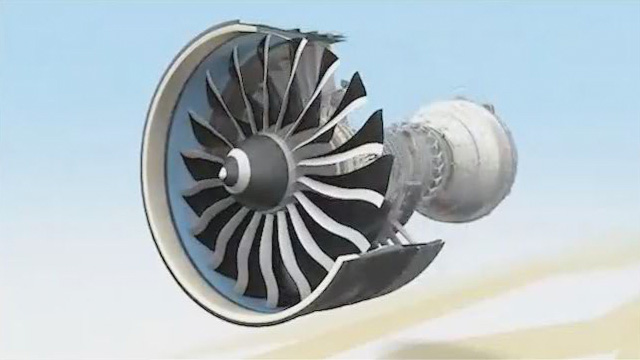
- Inlet Liner
- Chevrons
The nacelle is fitted with a sound-absorbing inlet liner to reduce fan noise.
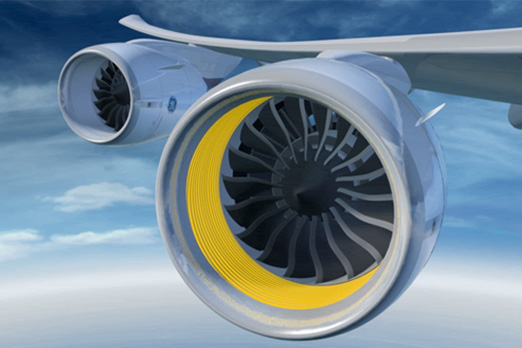
The engine is equipped with dual chevrons - one on the exhaust nozzle and a second on the nacelle - an advancement that reduces noise during takeoff and that is unique to the 747-8
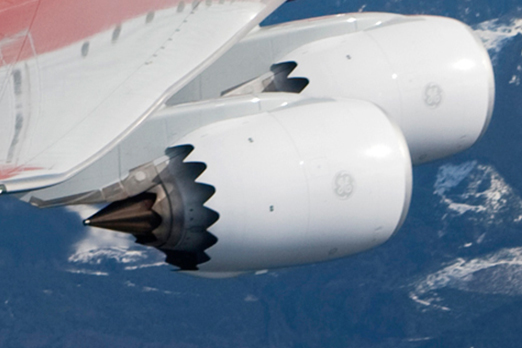
Proven Materials
The 747-8 extensively incorporates new generation aluminum alloys—the same as those on the 777—and graphite composites in the flaps, spoilers, nacelles, and rudder. The materials are more durable and better able to resist corrosion and damage, which reduces maintenance and increases the time an airplane is available and productive. They’re also lighter, which helps minimize airplane weight. A lighter aircraft is more efficient, consumes less fuel, costs less to maintain, and is subject to lower weight-based navigation and landing fees.
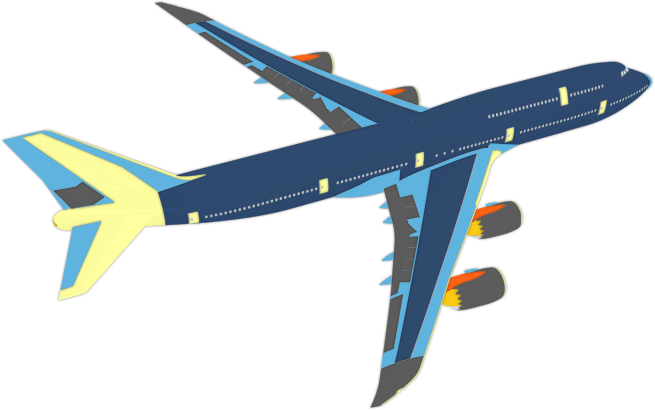
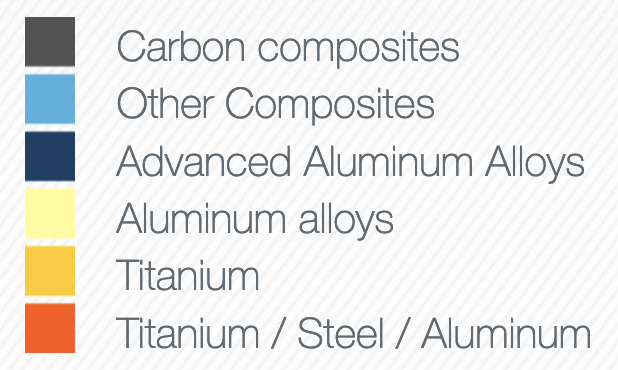
Passenger Experience
Luxury Elevated
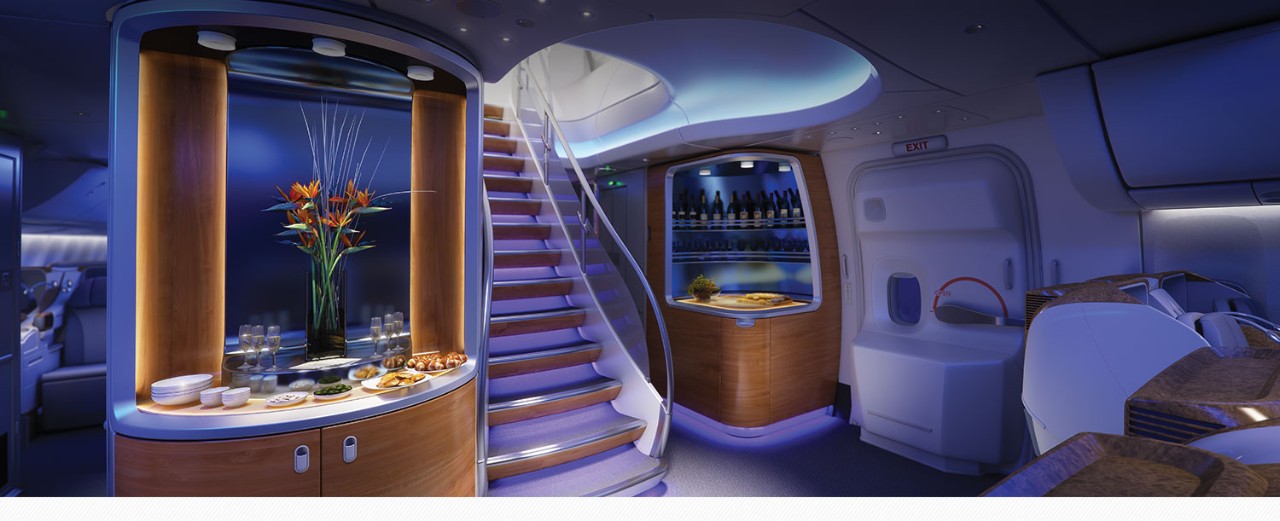
Architectural Features
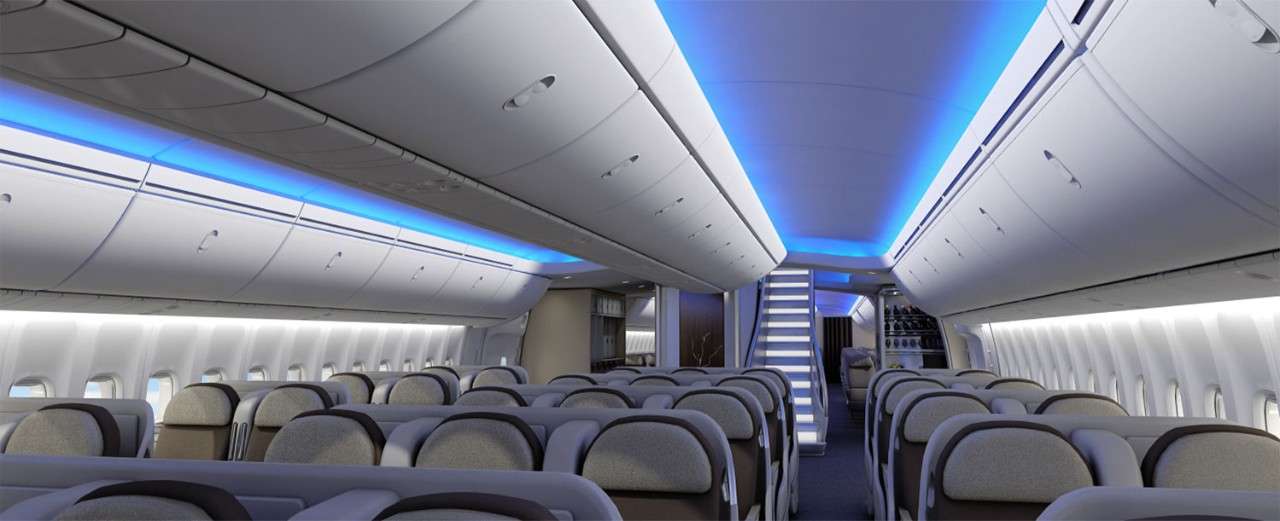
- Spacious Stowage
- Touch Points
- LED Lighting
- Entryway/Stairs
The new larger pivot bins provide space for four full sized roll-aboard bags. Giving every passenger room for their items. Larger bins, but without any loss of head room, because these bins store into the ceiling and out of the way. These also come with new latches that make opening and closing faster and easier.
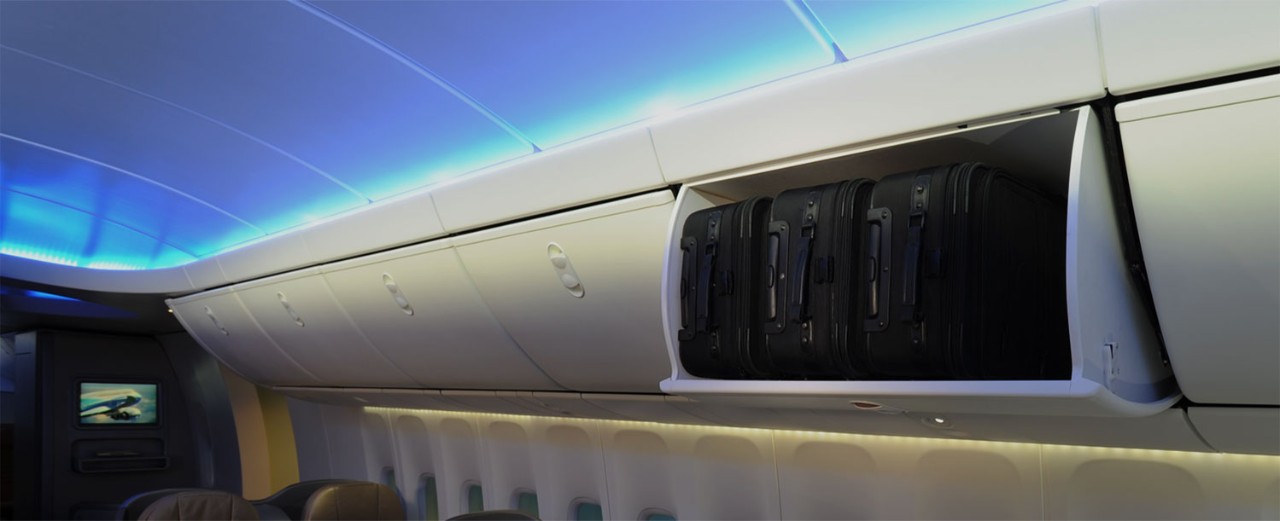
Touchpoints
- Designed for easier human interaction
- Consistent and thoughtful detail design throughout the passenger cabin
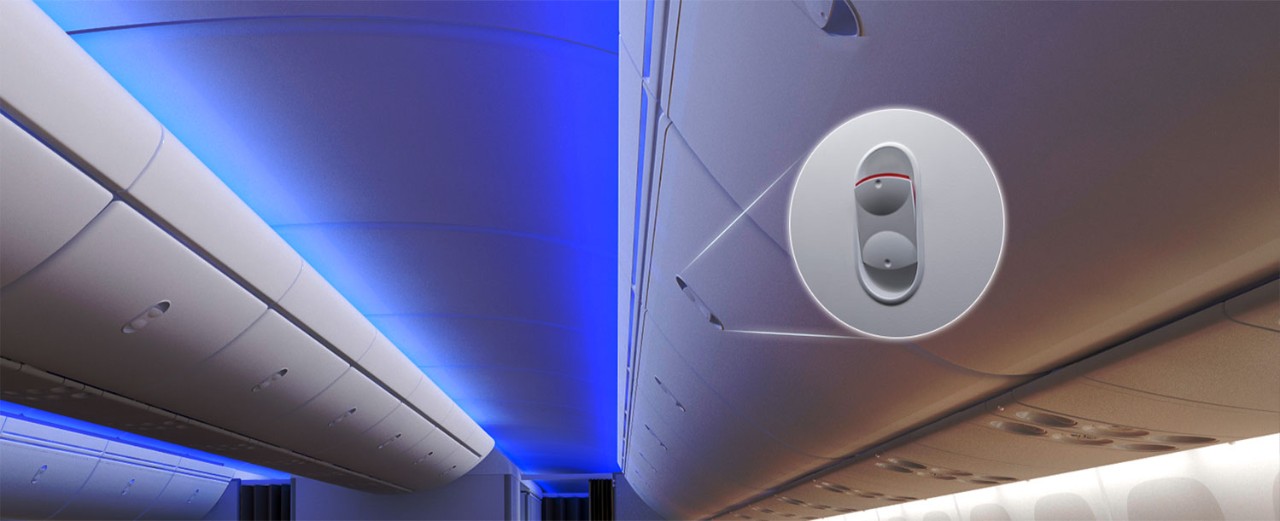
- Boarding
- Cruise
- Relaxation
- Meal Service
- Sleep
- Prelanding
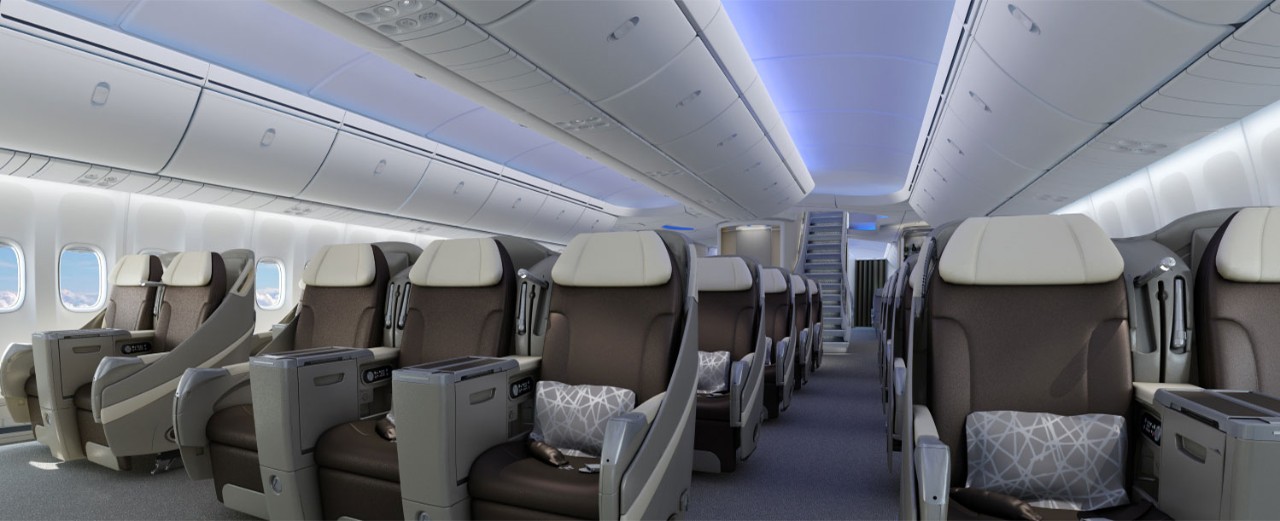
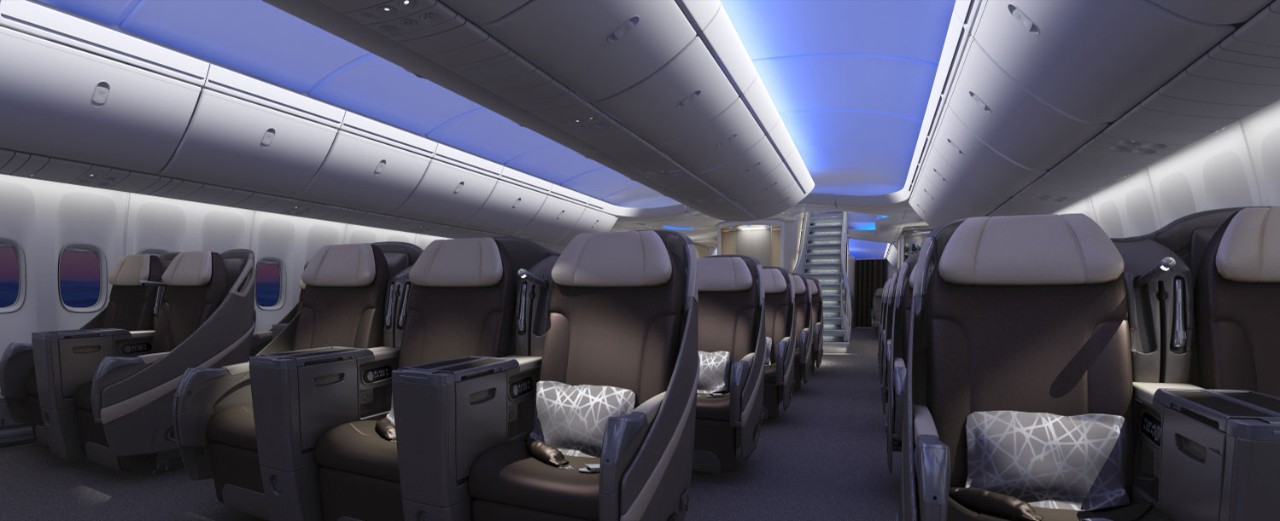
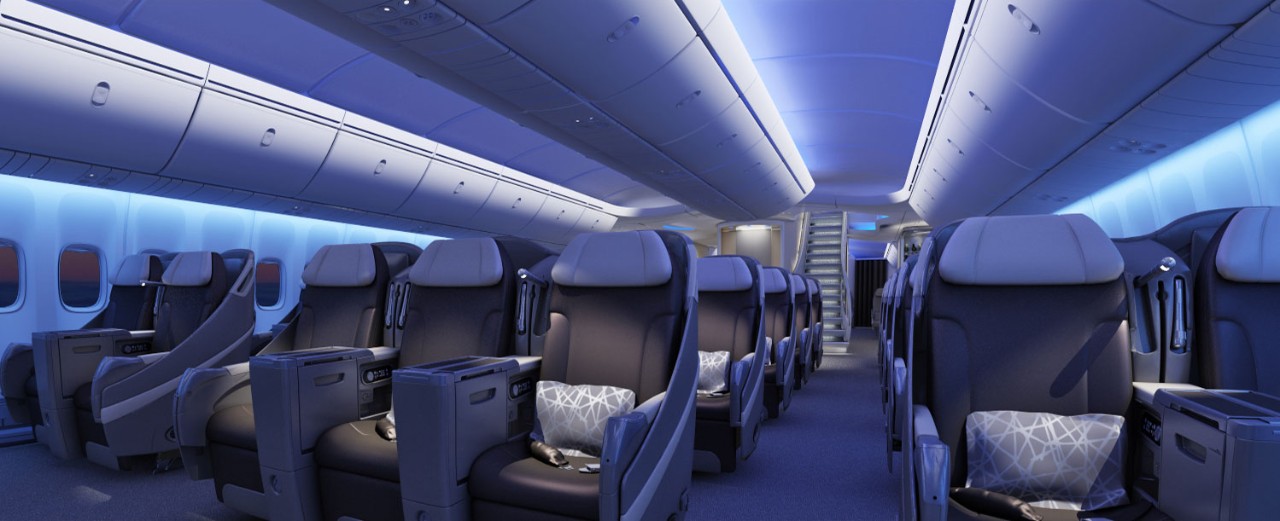
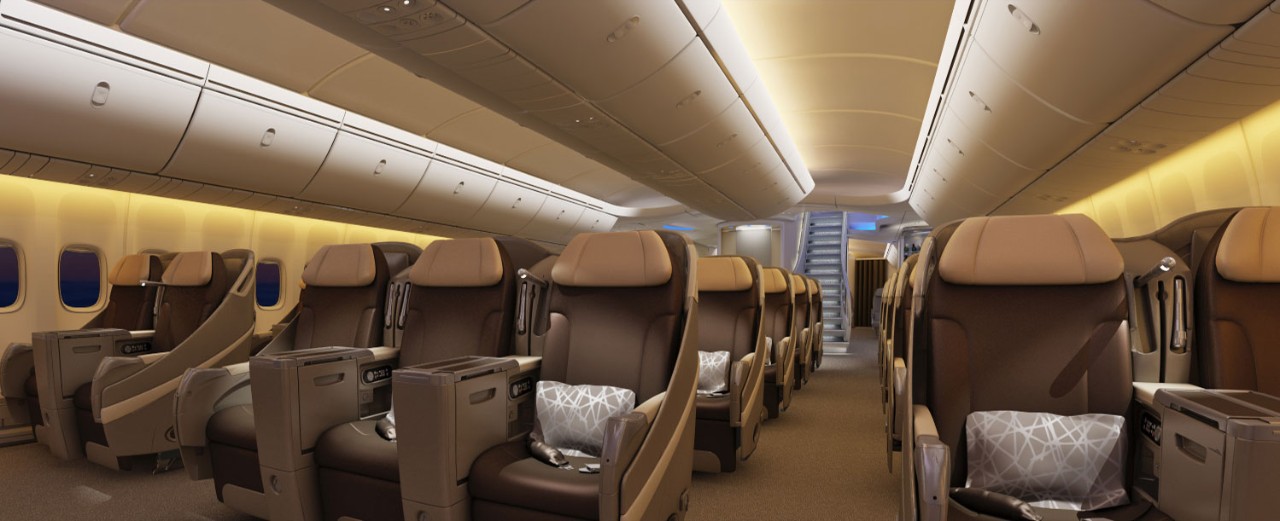

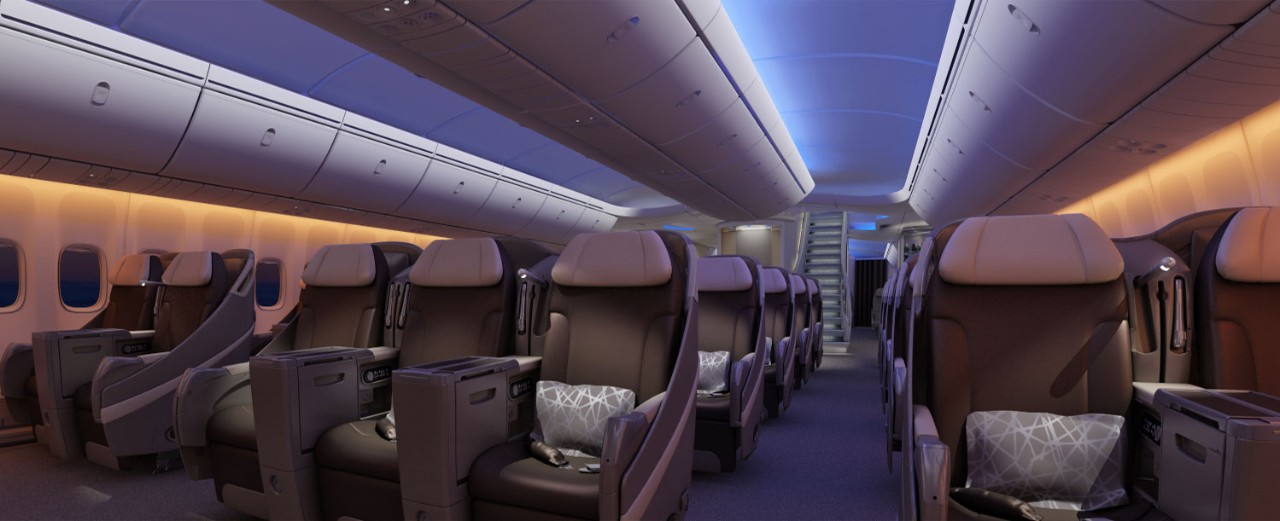
Redesigned Staircase
Brighter, Open, Welcoming
A dramatic staircase at the main passenger entrance imparts a gracious welcome and draws the eye upward, creating an impression of ample, open space.
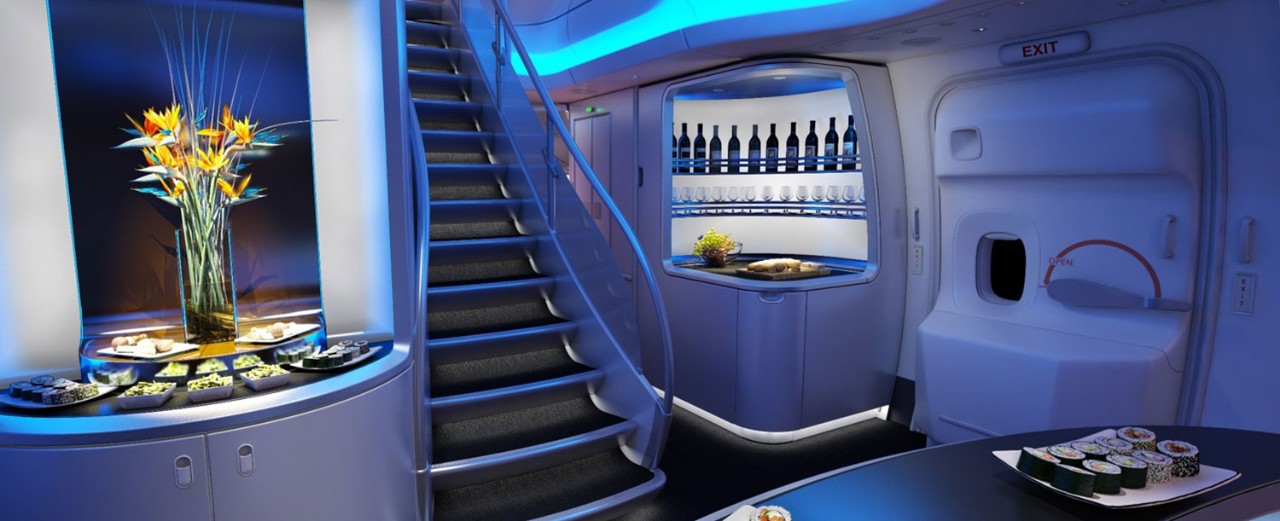
- First Class
- Business Class
- Economy
The 747-8 features an exclusive, private first class section at the front of the main deck cabin highlighted by a unique, near-forward view. First class passengers enjoy a serenely relaxing architecture, free from any distracting through traffic, while being intimately connected to the flying experience. With innovative Dreamliner-inspired cabin enhancements, the 747-8 improves on the already highest-rated first class experience in the industry.
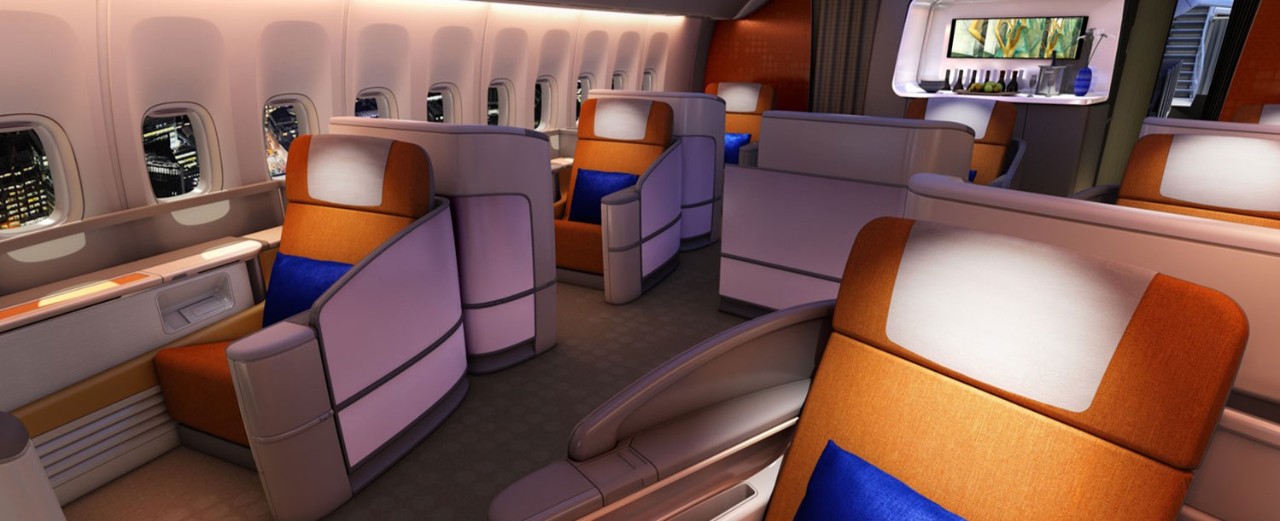
Business class passengers onboard the 747-8 will enjoy the exclusive "private jet" experience of the new, extended upper deck. A new elegant staircase welcomes the premium passenger to the latest evolution of the industry’s highest-rated business cabin. This more spacious premium seating area is ideal for relaxation or work, free of unwanted interruptions while still offering personal attention. The Dreamliner-inspired upper deck design philosophy connects the passenger to an enjoyable and exclusive flying experience.
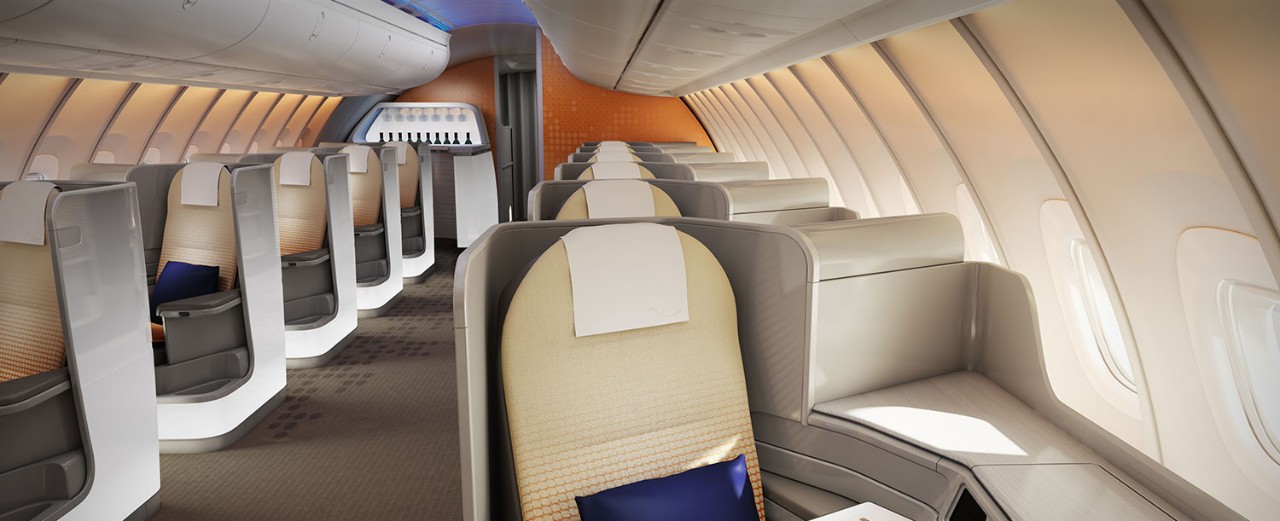
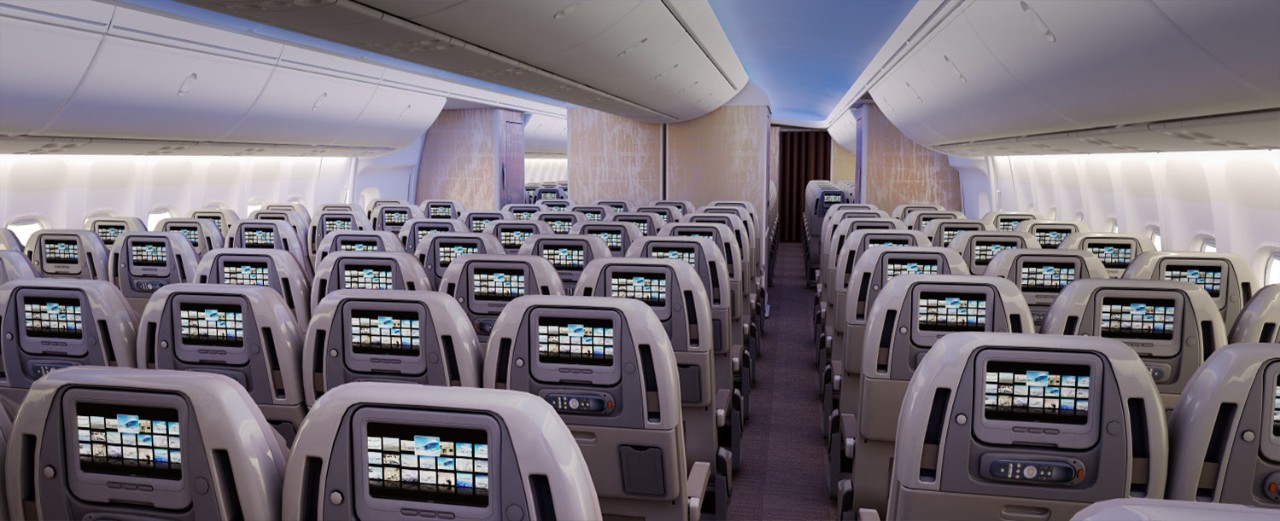
Environment
Quieter
- Quieter for the community
- Quieter at Heathrow
- Quieter at Narita
Reducing the noise of our new airplanes is a priority at Boeing, and the 747-8 is a notable example of our success. Noise-reduction technology on the 747-8 includes a GEnx engine with a high bypass ratio that decreases noise in the surrounding community. Dual chevrons and a sound-absorbing liner on the nacelle diminish noise during takeoff, and simplified flaps on the wing trailing edge reduce noise during landings. The 747-8 is 15 decibels quieter than the Stage 4/Chapter 4 noise limit that ICAO established for aircraft certified after 2006.

Quieter at Heathrow
6,000-nmi mission takeoff
Communities near airports know that decreasing the noise created by airplane arrivals and departures is an important measure of environmental performance. The 747-8 has significantly improved that measure, reducing its noise footprint by more than 30 percent compared with that of the 747-400. The 747-8 also meets the stringent noise standards for takeoff and landing at Heathrow Airport, where it will be allowed to operate 24 hours a day. Under the airport’s quota count (QC) system, the airplane is classified as QC1 for arrivals and QC2 for departures, giving operators the flexibility to schedule flights without curfew restrictions.
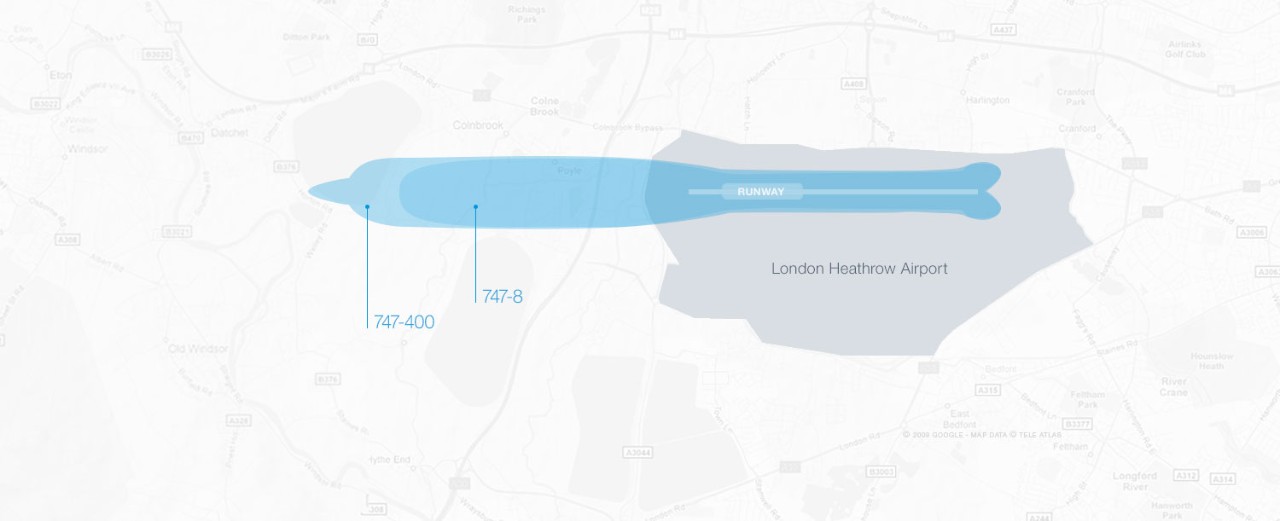
Quieter at Narita
6,000-nmi mission takeoff
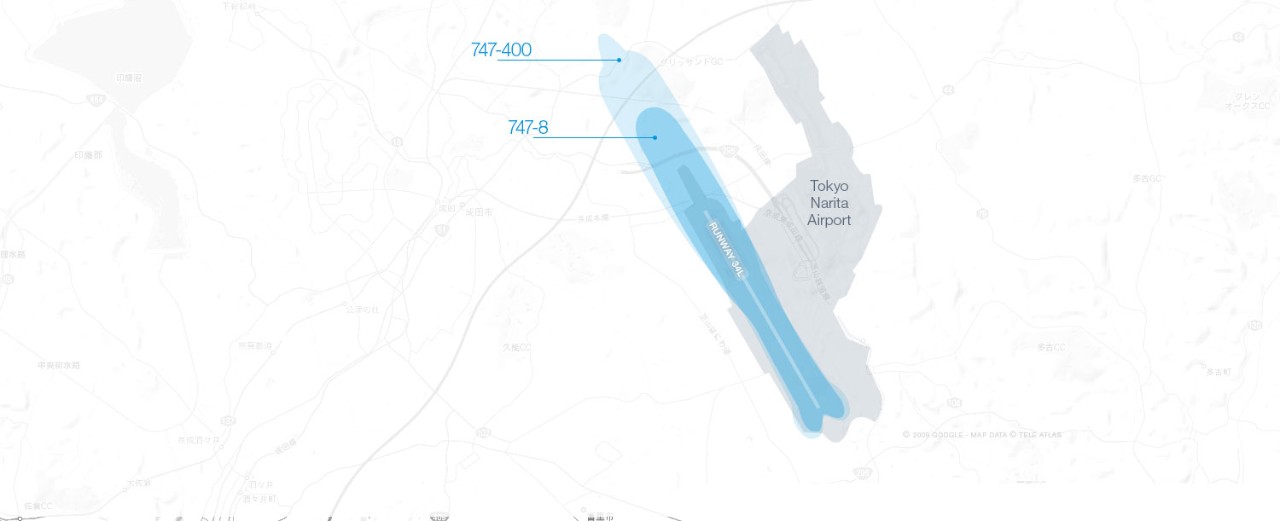
Cleaner for the Community
Emissions such as hydrocarbons, carbon monoxide, smoke, and nitrogen oxides affect air quality near airports. The 747-8 performs substantially better than all 2008 emissions standards established by the International Civil Aviation Organization (ICAO) Committee on Aviation Environmental Protection (CAEP). Most significantly, the GEnx combustor dramatically reduces the airplane’s emissions of nitrogen oxides, which fall 52 percent below ICAO limits and well below the more stringent limits anticipated in the future. Airlines can be confident that the 747-8 will meet environmental requirements for many years to come.

Lower CO2
747-8 Fuel Efficiency Means Lower CO2
Three-class seating, 6,000-nmi (11,110 km) trip
Conserving fuel is not just an economic advantage; superior fuel efficiency means lower emissions. For each kilogram of fuel saved, three fewer kilograms of carbon dioxide are produced. Per-seat-kilometer, the carbon dioxide emissions of the 747-8 are significantly lower than those of its predecessor.

Boeing Commitment
Boeing Commitment
Building airplanes to be clean and quiet simply makes good economic sense. Airplanes that use fuel more efficiently cost less to operate and give airlines greater access to markets that are subject to increasingly stringent environmental regulations.
Boeing is committed to building airplanes that meet future environmental standards. Working with engine manufacturers and fuel producers, Boeing will promote development of more efficient propulsion systems and cleaner fuels. In cooperation with air traffic authorities, Boeing will pursue more efficient operating procedures to reduce airplane fuel consumption and carbon dioxide emission-on the ground and in the air.
100%
ISO 4001
75%
of research
25%
better
15%
improvement
ISO 14001 certification planned for all manufacturing sites.
Our environmental commitment spans the entire life cycle of our jetliners—from the offices where airplanes are designed, through the manufacturing process, to the operation and maintenance of the airplane in commercial service, and ultimately to the recycling of resources from retired aircraft. As a recognized Lean+ innovator, Boeing Commercial Airplanes has or will achieve certification for all manufacturing sites under stringent ISO environmental management standards.
Economy and Performance
Overview
The New 747-8
The heart of the large airplane market
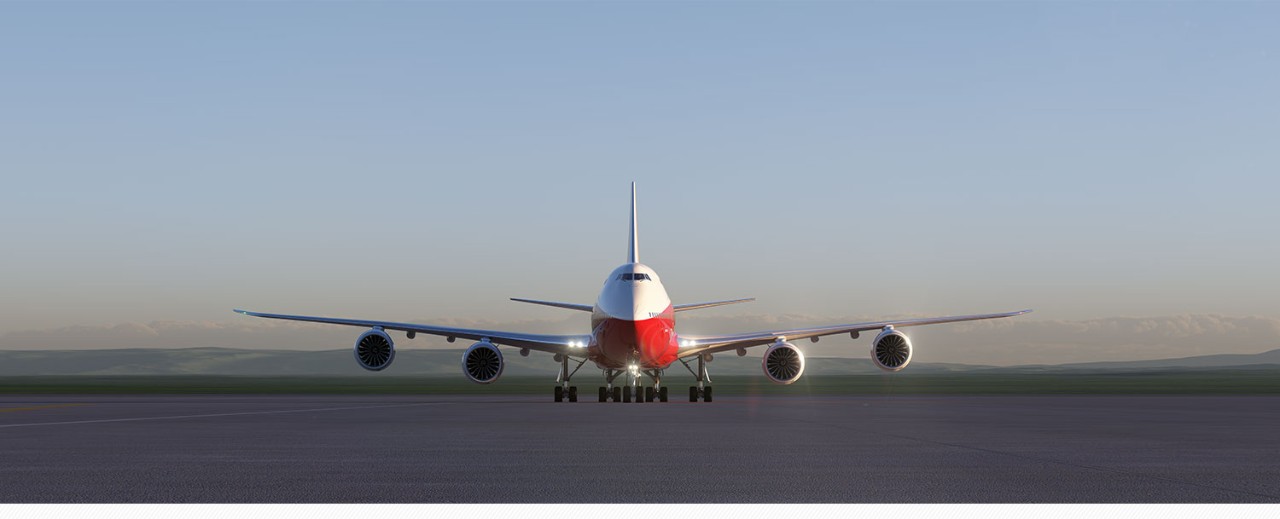
Speed
World's Fastest Commercial Jet

Range
- London
- New York
- Beijing
- Singapore
- Dubai
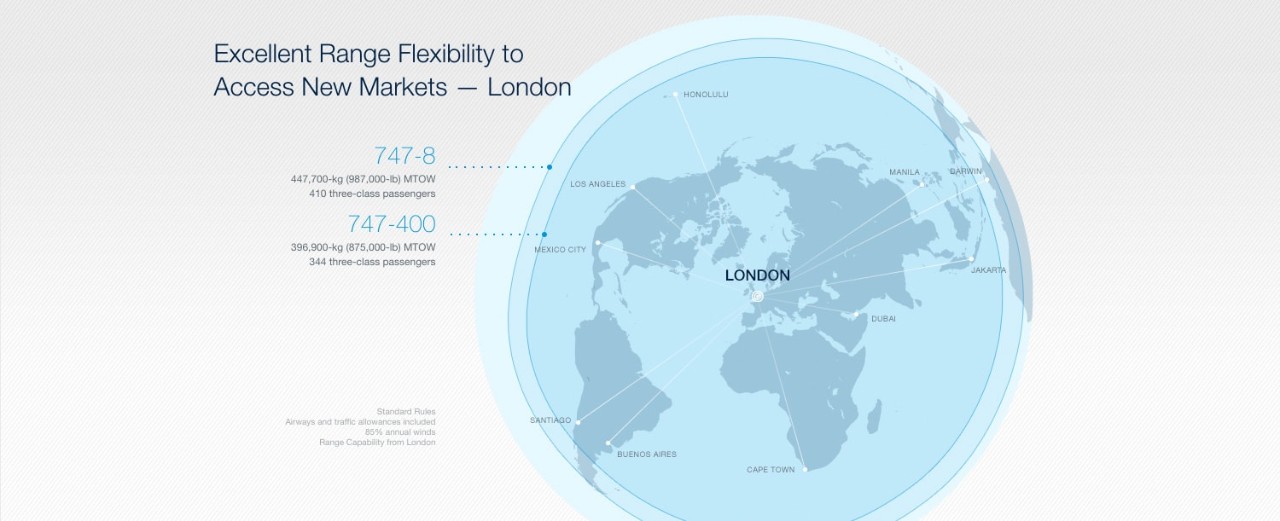
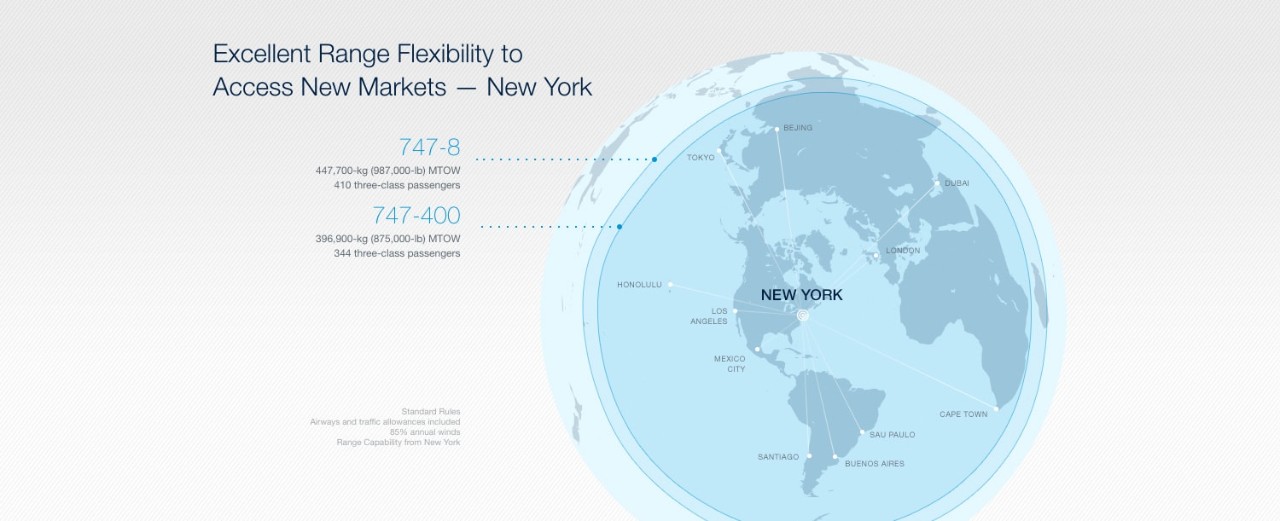
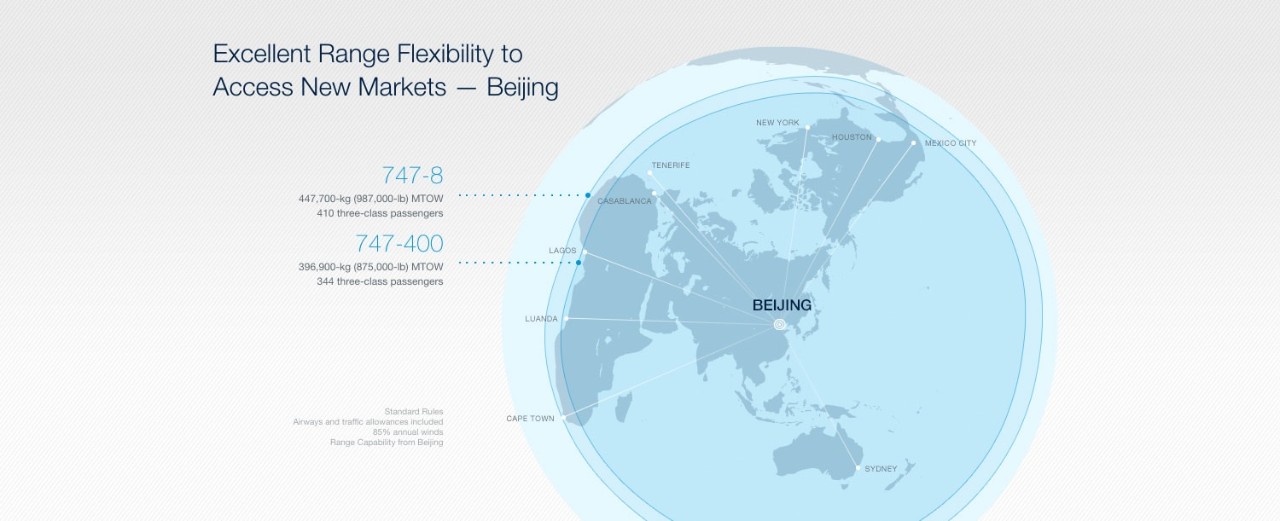

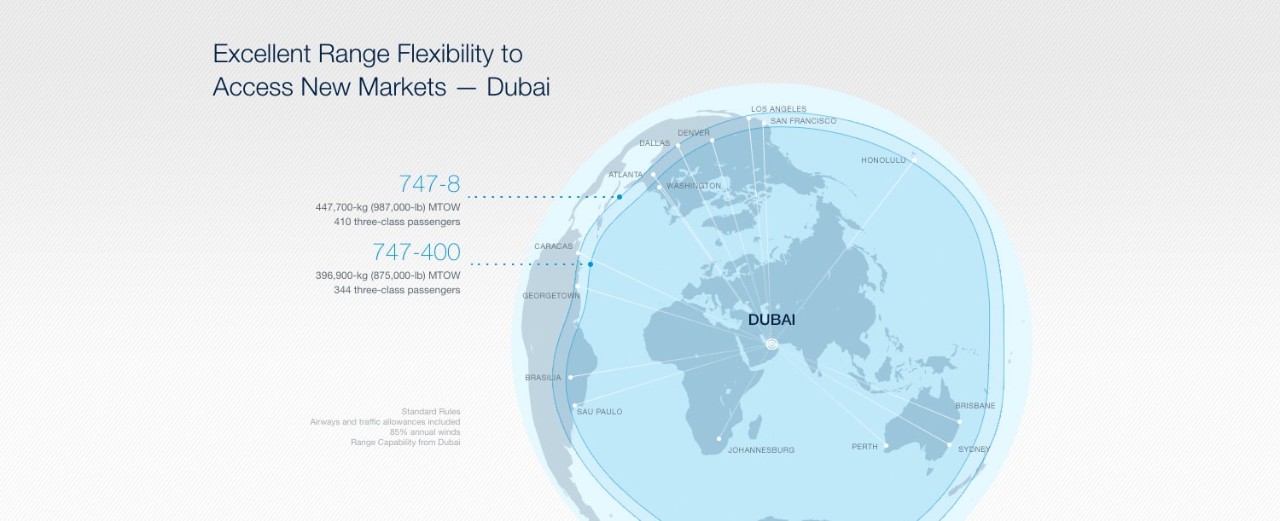
Profitability
- Class by Itself
- Capacity
- Lower Fuel Cost
- Lower Cash Operating Costs
The New 747-8 is in a Class by Itself
Three - Class Seating
The 747-8 is the only passenger airplane in the 400- to 500-seat market, providing airlines the right capacity for a flexible and thus more profitable fleet.

Additional Seats and Cargo Volume
The 5.6-m stretch offers 66 additional seats and 16% more cargo volume.

Lower Fuel Cost
The 747-8 consumes less fuel per trip and less fuel per seat.
The 747-8 incorporates breakthrough technology—the GEnx engine, a wing design with better performance, and lighter alloys and composites—that substantially reduces fuel consumption.
The 747-8 has better fuel economy than any large airplane in service today. Per seat, its fuel efficiency is 16 percent better than that of the 747-400.

Lower Cash Operating Cost
15% lower cost per seat, similar cost per trip — more efficient, less risk
The 747-8 has lower operating costs than any passenger airplane—of any size— in service today.
Superior structural efficiency and its benefits—less maintenance, fewer and smaller weight-related fees, and better fuel economy— reduce trip costs. Lower trip costs boost profit margins and reduce operators’ business risk during periods of economic volatility and in markets with fluctuating demand.
The 747-8 also has significantly better seat-mile costs than for the 747-400. Lower costs per seat-mile translate into higher profit margins for operators.

Commonality
747-8 Approved at More Than 271 Destination Airports
In-service at 168* Airports World Wide
Key geometric similarities between the 747-8 and other airplanes in the 747 fleet—such as engine, span and the wheeltrack width—mean that airports need not modify runways for the new airplane. Every airport that accepts a 747 today can accommodate the 747-8. With over 900 747s flying to more than 200 cities around the world, airlines and airports are ready for the 747-8.

Characteristics
747-8
| Passengers | 410 |
| Range nm (km) | 13,650 km / 7,370 nmi |
| Length | 76.3 m (250 ft 2 in) |
| Wingspan | 68.4 m (224 ft 5 in) |
| Height | 19.4 m (63 ft 6 in) |
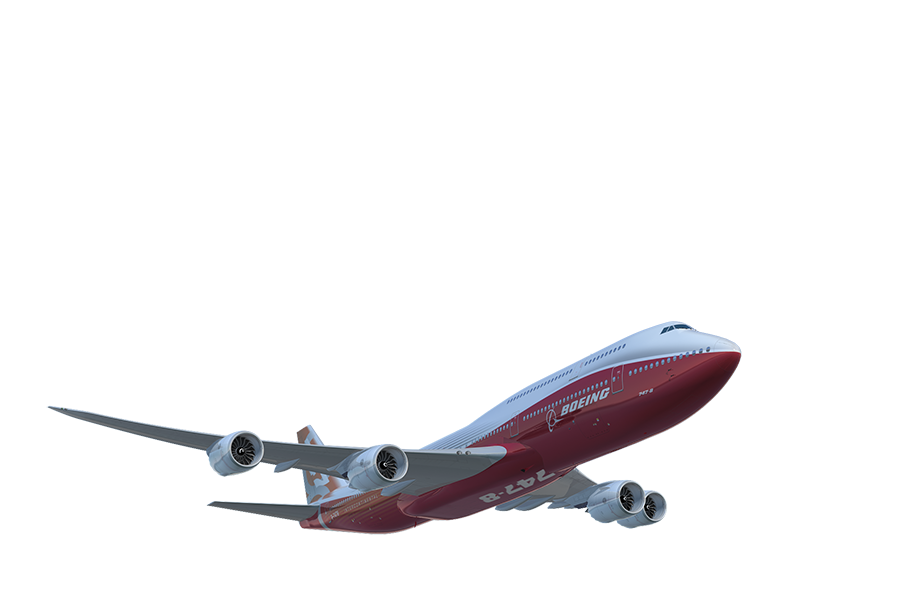
Cargo Arrangement

| Cruise Speed | Mach 0.86 |
| Total Cargo Volume | 6,225 ft3 |
| Aisles | 2 |
| Maximum Takeoff Weight | 447,700 kg / 987,000 lb |

